











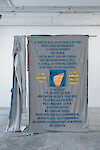
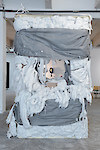
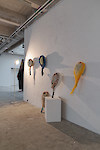
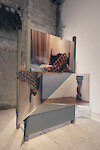
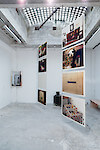
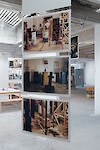
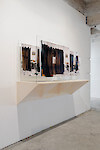
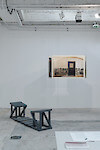
Le Musée Antidote
For his first exhibition in a Contemporary Art Center, Florian Fouché presents the third and final stage of his Musée Antidote after the Biennale de Rennes in 2012 and the Belvedere at Palais des Beaux-arts de Paris in 2013. This exhibition stages a dialogue between a documentary corpus on the Museum of the Romanian Peasant in Bucharest, some sculptures relating to it and other ones parallel to this research.
Florian Fouché practices an assemblage that deals with an experimentation on documentary photographic forms. His sculptures put suspension, constrained materials, precarious balance, objects and scale into tension. They take part of a history of vernacular forms and their appearance in artistic pratices sush as Paul Gauguin and Mike Kelley.
In 2007, while studying how the Romanian peasant creation influenced the sculpture of Brancusi, Florian Fouché discovers the Museum of the Romanian Peasant in Bucharest. In 2012, he photographed it and investigated on the experimental museography thought by Painter Horia Bernea and Ethnologist Irina Nicolau in the full post-revolutionary political crisis of the early 1990’s. They invented a museum in perpetual renewal where objects of peasantry are staged in an antinaturalistic way as a " theater of objects without actors”, a " resolutely anti-educational space, open to interpretation ". This museography puts into perspective the unbreakable link between high art and popular tradition, and primitivism in the history of modern and contemporary art.
This " barricade museum " which helps worlds of art to breeze, contrasts with traditionnal museum’s frames : “ the rumor surrounding the objects in the name of often populist pedagogy,... [lire plus]
Le Musée Antidote’s project is supported by Fondation Nationale des Arts Graphiques et Plastiques and Amis du Palais de Tokyo, Paris